Commemorative stone for the Polish special camp 1939/40 (1954)
In 1954, a commemorative stone was dedicated on the former roll call square of Buchenwald Concentration Camp to commemorate the special camp of 1939/40. After the camp was largely dismantled in 1952, its upper area was supposed to be restructured and assume a more fitting configuration. To the left and right of the roll call square, which was restored, the areas that encompassed the special camps of 1938/39 and 1939/40 were furnished with uniform areas of grass, pathways, and commemorative stones.
With the beginning of the war, both Poles and Austrian Jews, declared stateless by the NS regime, suffered and died in the special camp. The commemorative stone remembers them as "Polish patriots" and thus bore testimony to the international dimension of the antifascist resistance. The text on the commemorative stone was altered in 1985, when the number of inmates in the special camp was corrected from 5,300 to 2,098.
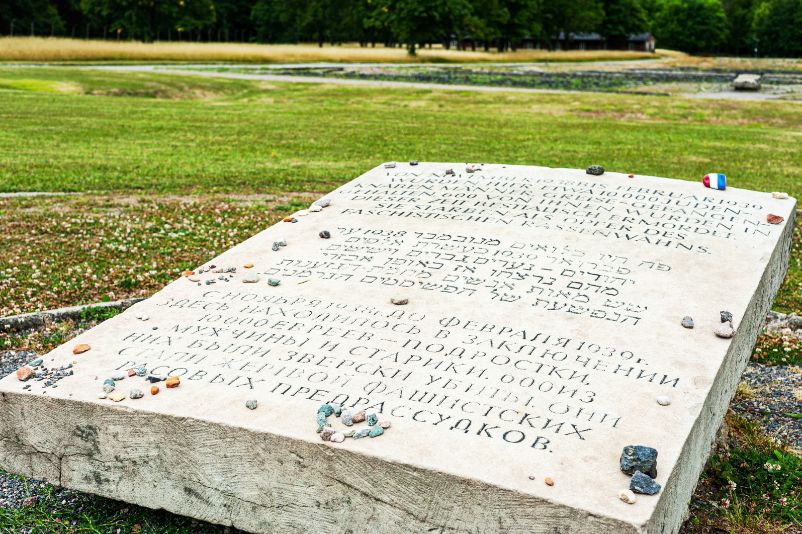
Commemorative stone for the Jewish special camp 1938 (1954)
In 1954, a commemorative stone was installed to honour the memory of the Jewish special camp located on western side of the roll call square in 1938/39.
Official representatives from Israel were invited to the GDR for the first time in 1988 to commemorate the November pogrom. As a part of this visit, a Hebrew inscription was added to the commemorative stone in the place of English.
Until 1990, the Jewish commemorative stone, with its mention of "fascist racial fanaticism," was the only one not directly associated with the overarching narrative of the communist resistance.
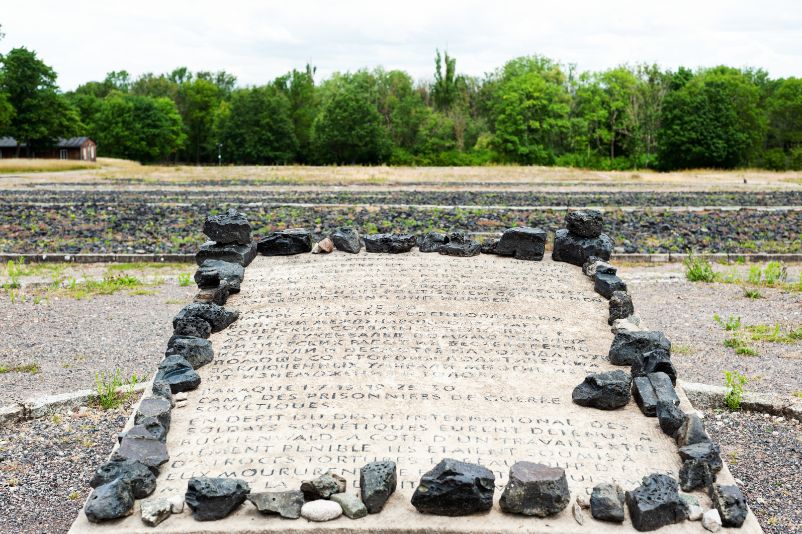
Commemorative stone for Soviet prisoners of war (1954)
A commemorative stone dating from 1954 honours the memory of some 3,500 Soviet prisoners of war, who were held in a special area of the inmates' camp.
Plans originally dating from 1953, which foresaw turning only the upper area of the camp to the left and right of roll call square into a commemorative site, were supplemented in 1954 by two commemorative stones dedicated to Soviet prisoners of war—in addition to one honouring the murdered members of the British intelligence service and another dedicated to the resistance effort in the inmate infirmary.
The stories of the resistance efforts by Soviet prisoners of war were part of a larger narrative propagated in the GDR about an underground international camp committee lead by communist inmates.
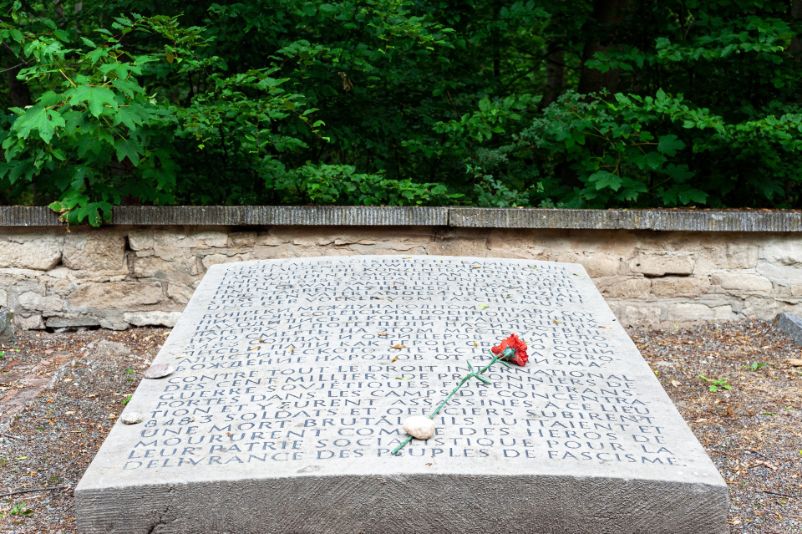
Commemorative stone "Stable. Site of the murder of 8,483 Soviet soldiers" (1954)
Since 1954, a commemorative stone and a surrounding wall mark the location of the former horse stall and recall the largest mass murder of Buchenwald, which was perpetrated here.
The commemorative stone honours the Soviet prisoners of war, who were killed by a bullet to the back of the head in an execution facility out of ideological and racist motivations: "They fought and died as heroes of their socialist fatherland." The inscription thereby contradicted the politics of the Soviet Union at the time towards soldiers who had been prisoners of war and who were generally suspected of collaborating with the enemy. Not until the late 1950s—after the death of Stalin—was there a cautious rehabilitation of those previously branded as "traitors."
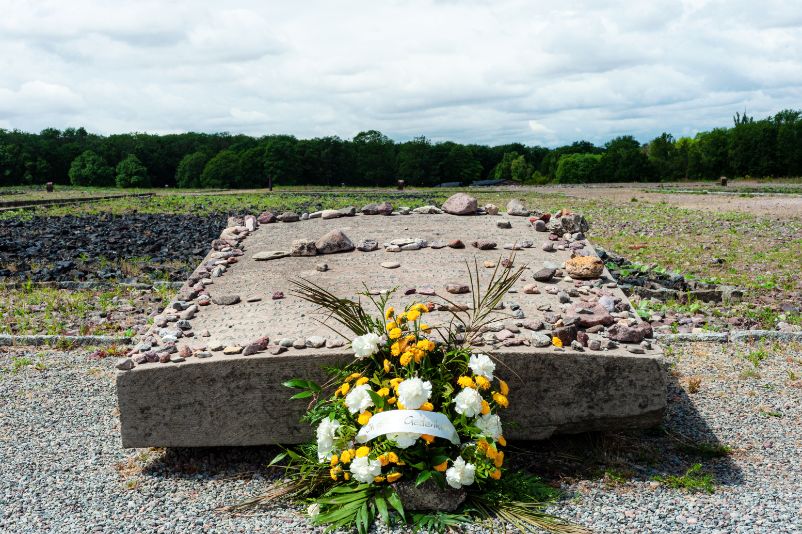
Commemorative stone for the murdered members of the British and Canadian forces (1954)
A commemorative stone from 1954 at block 17 honours the memories of Allied intelligence agents, who were deported to be murdered at Buchenwald.
Beginning in 1942, block 17 served as a temporary quarantine zone for smaller groups of arrivals, including 37 Allied intelligence agents, who reached the camp in August 1944 with a transport from Pairs. They had previously been arrested in occupied France as agents of the British secret service and as liaison officers to the résistance.
In September/October 1944, most were hanged in the basement of the crematorium. Only three men—Harry Peulevé, Edward Yeo-Thomas, and Stéphane Hessel— managed to be saved with the help of members of the camp resistance by switching their identities with those of deceased inmates.
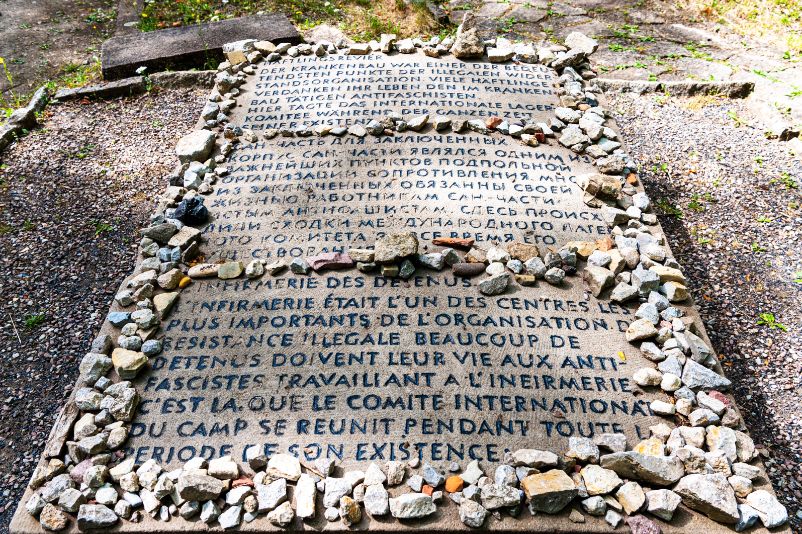
Commemorative stone at the former infirmary (late 1950s)
Inaugurated in the late 1950s, the commemorative stone recalls the former inmates' infirmary simply as "one of the most important centres of the illegal resistance organization."
From the 1950s onward, the commemoration of the camp's underground resistance dominated the portrayal of Buchenwald in the GDR. This narrative, strictly aligned with a depiction of the exemplary role played by communists, almost completely obscured the suffering of the inmates; SS doctors killed hundreds of inmates by poisonous injection in the infirmary alone.

